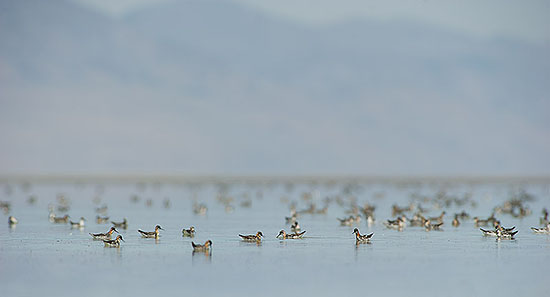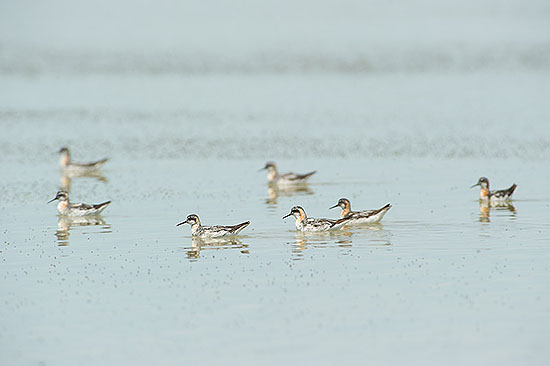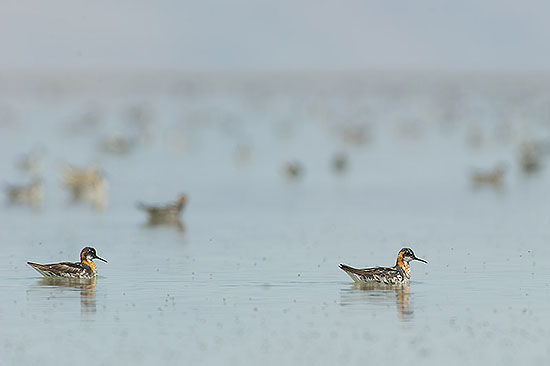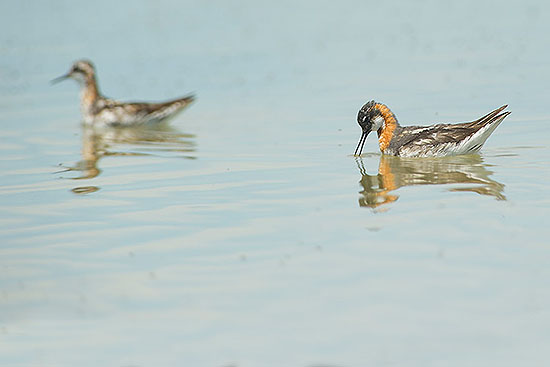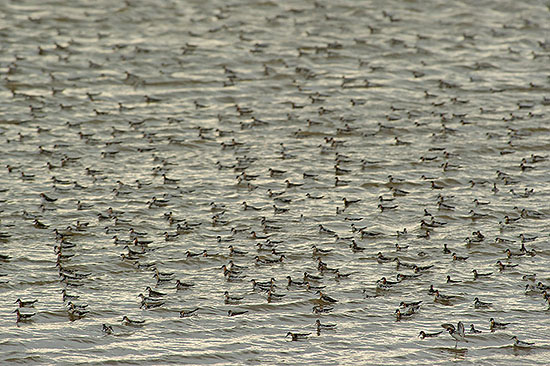Half July 2015, we visited Great Salt Lake. I knew the lake would be an attractive spot for birds, but during our visit we fell from one surprise into another. First of all, when driving the road towards Antelope Island, the combination of the lake and the surrounding desert landscape, combined with the air vibrations caused by the extreme heath creates a kind of a surrealistic scene. When we were driving the road it reminded me of song from the Talking Heads, Road to Nowhere (image under here). The next two images show the lake and the surrounding desert.

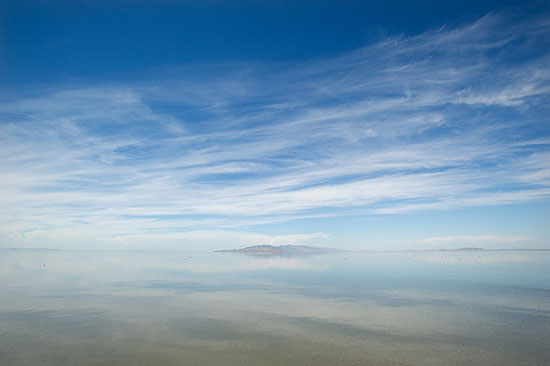
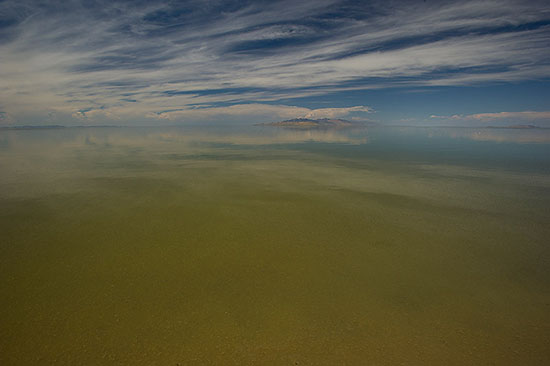
Large natural Lake
Utah's Great Salt Lake ranks in its own way with the West's outstanding wonders: it is the largest natural lake in the continental United States west of the Mississippi and stretches northwest of Salt Lake City over some 5000 square kilometres, although its flat basin means small changes in water level cause large variations in surface area. Broad expanses around the lake are covered in shallow marshland attractive to nesting and migratory waterbirds of all kinds. The Great Salt Lake has no outlet; losing water only through evaporation, it has accumulated such a high concentration of salts that no fish can survive there.
Billions of Brine Flies
The next surprise was the amount of Brine Flies covering the entire border of the lake and floating in groups of thousands on the edges of the lake. The species on the image is Ephydra hians.
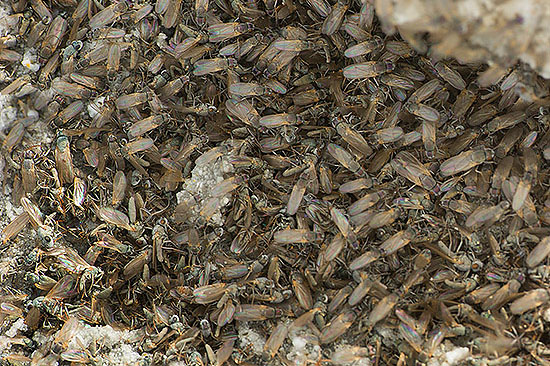
During the summer or early fall billions of Brine Flies occur along the shoreline of Great Salt Lake in Utah. While their numbers are intimidating, brine flies aren't interested in humans. They will get out of the way if disturbed, and they tend to stay close to the ground near the edge of the lake. Brine flies live most of their lives underwater. Their life cycle begins in the summer, when the female flies lay their eggs on the water surface. After the eggs hatch, the larvae graze near the lake bottom. They eat mostly cyanobacteria, but their diet also includes other types of bacteria, bottom-dwelling algae, diatoms, and detritus. They prefer to live in muddy areas rather than in sandy areas. After one to a few weeks (depending on the water temperature) the adults emerge from their pupal casing and salt lakes, Great Salt Lake, float to the surface. Adults live for only a few days, just long enough to mate and lay eggs. If food is plentiful and temperatures remain high, brine flies can complete two life cycles in one season. After the adult brine flies hatch, pupal casings are blown about by the wind. The brown casings pile up in often miles-long masses along the shoreline. In fact, the Utah Division of Wildlife Resources counted 7 billion pupal casings along just 6 miles of the Antelope Island causeway. That's more than the total number of human beings on the entire planet! And that's just a small part of the entire population occurring along the Lake... Decomposers such as bacteria and fungi break down the pupal casings and return their nutrients to the food web.
Most of the brine flies that live in Great Salt Lake belong to two species: Ephydra hians and Ephydra cinerea. Ephydra hians, the larger species, is the less common of both species.
Bulk food for birds
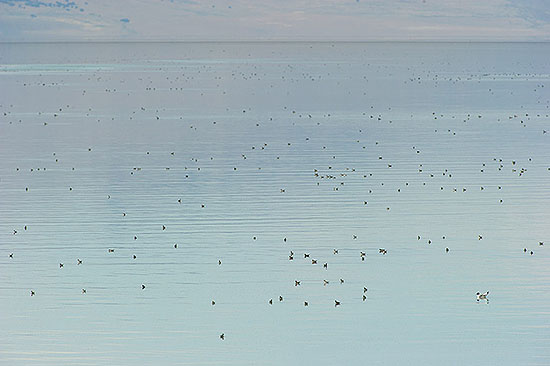
The Brine Flies are the bulk food for many birds, spiders and many carnivorous insects such as Tiger Beetles. Although a little later, during the fall migration numbers of waders will rise to even higher numbers, there were already hundreds of thousands of Waders present along the shores. Under here an image where one can see the muddy shores of the lake, which are entirely covered by the Brine Flies (all the dark brown dots on the mud, as well as the patches on the water are Brine flies).
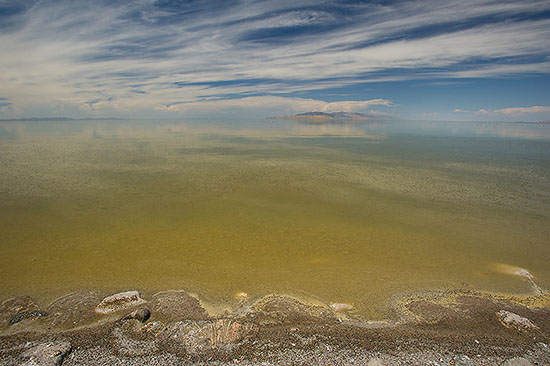
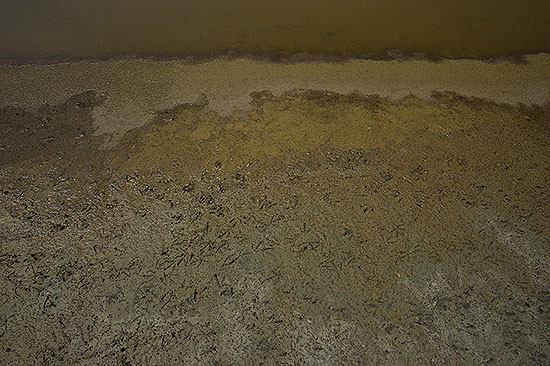
The images under here, from foraging Franklins Gulls and the Long-billed Curlews give an idea of the amazing amounts of Brine Flies.
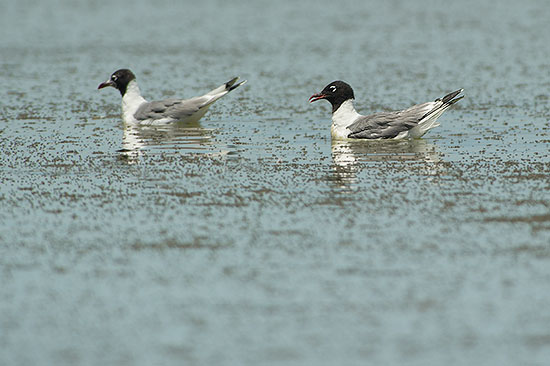

Many waders were present around the lake, such as several Sandpiper species, Black-necked Stilts, American Avocets, and Marbled Godwits (images under here).

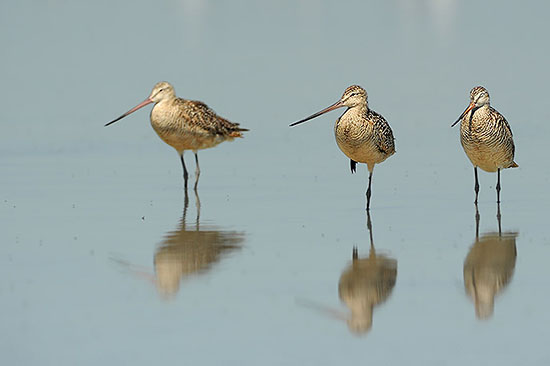
Franklins Gulls (first image under here) and California Gulls (second image under here) are present in large numbers. Thousands of Eared Grebes were also foraging on the lake, but this was only a beginning of the autumn migration.
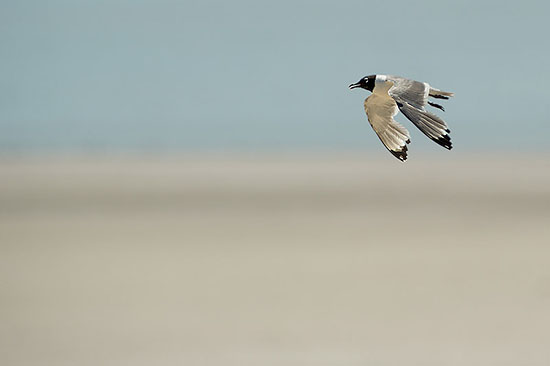
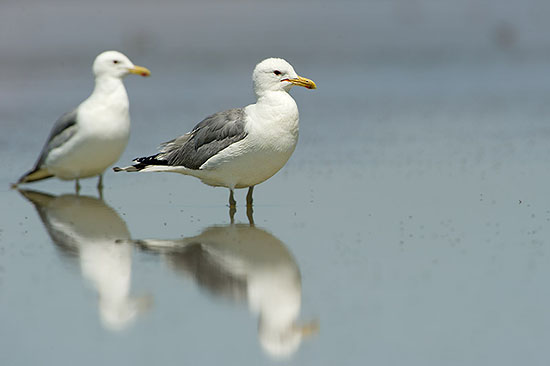
Phalaropes
The most impressive was the amazing amount of Phalaropes. A single count of Wilson’s Phalaropes during fall migration exceeded 500,000, which is 30% of the global population. As many as 250,000 American Avocets and 65,000 Black-necked Stilts also stage on the shores of GSL. During Our stay Red-necked Phalarope was by far the most numerous bird (probably more than 100.000 birds were already present). Their numbers can also peak towards about 250.000 birds.
Wilson's Phalaropes were also present but still in much lower numbers, I only saw a few hundreds of them on the lake (image under here).
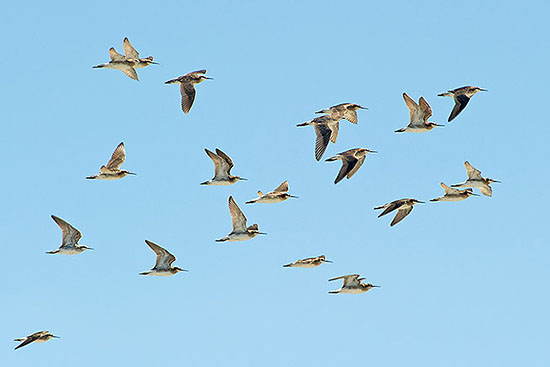
The next series of images illustrate the dazzling numbers of Red-Necked Phalaropes. Their frantic foraging behaviour is also great part of the spectacle. If a birds can suffer from ADHD, Phalaropes are serious candidates for this disease: they are picking almost nonstop at the tiny insects and larvae, and this while they are spinning every few seconds around their axis.
